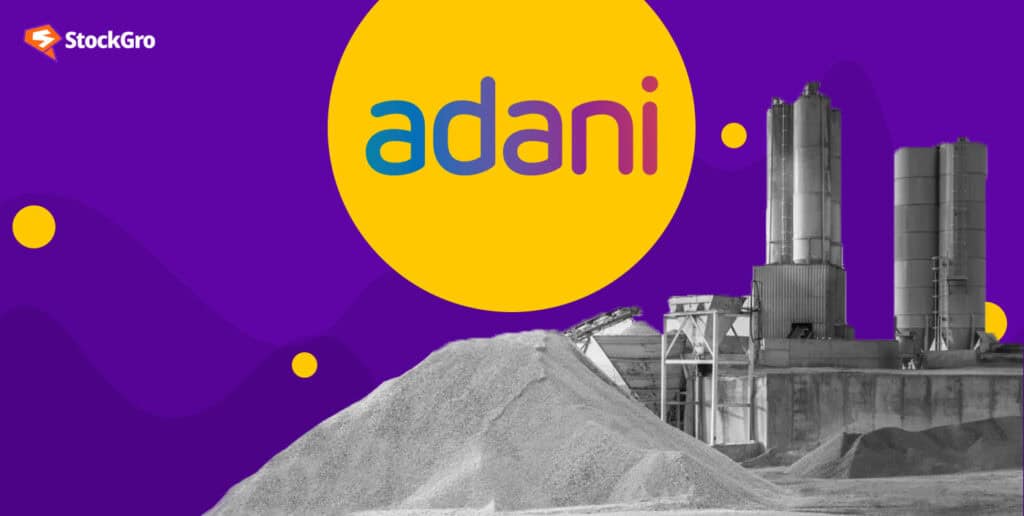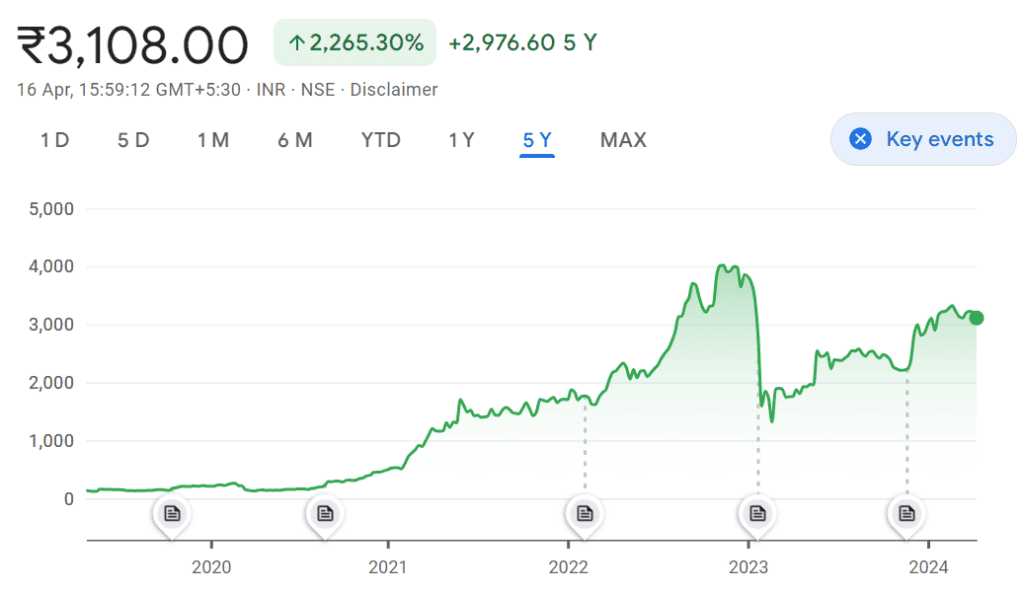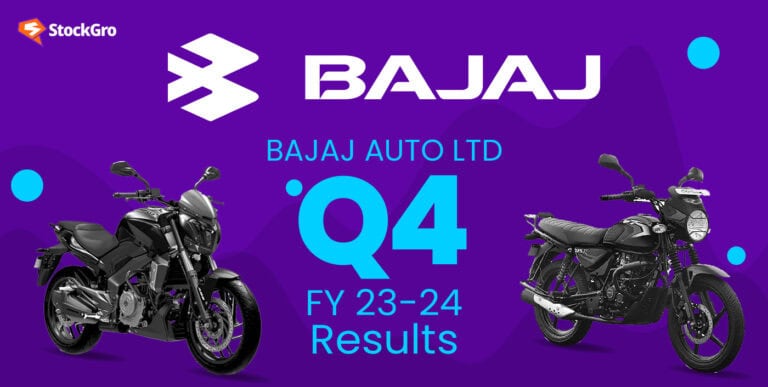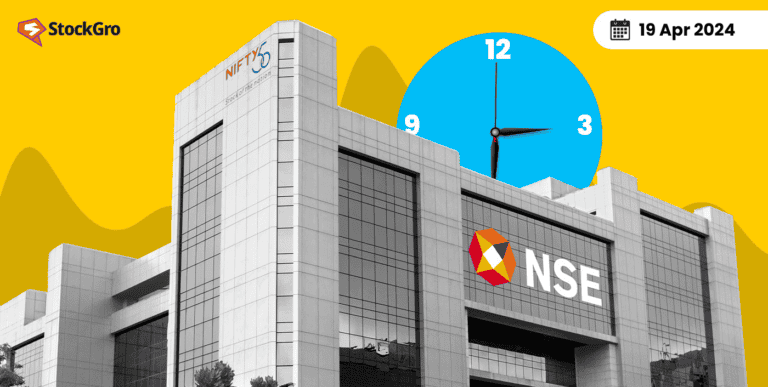
The Indian cement market, a robust pillar of the nation’s infrastructure, is a bustling arena of established giants and emerging players. It’s a market characterised by intense competition, constant innovation, and the relentless pursuit of quality and sustainability.
Imagine the fusion of the Adani Group’s business acumen with the vibrancy of the Indian cement market. A powerhouse of diversified businesses, the Adani Group has left its indelible mark on ports, logistics, agribusiness, and energy sectors. Now, it’s setting its sights on a new frontier – the Indian cement market, with an ambitious goal to capture a 20% share by FY28.
This article explores the fascinating journey of ambition, strategy, and growth of the Adani Group as they set their sights on the cement industry.
Adani Group’s Current Position in the Cement Market
Adani Group has made impressive progress in the Indian cement market, showcasing its expertise and success. With the strategic acquisition of Ambuja Cements and ACC, two prominent cement manufacturers in India, Adani Group has successfully established a significant presence in the industry.
At present, Adani Cement, the cement division of the group, has a significant market share of 14%. Adani Cement has established itself as the second-largest player in the Indian cement industry, closely following UltraTech Cements.
With a combined installed production capacity of 67.5 MTPA (million tonnes per annum), the subsidiaries of Adani Group – Ambuja Cements and ACC have established themselves as leading and highly respected brands in the Indian cement market.
With 14 integrated units, 16 grinding units, 79 ready-mix concrete facilities, and more than 78,000 channel partners across India, these two enterprises are among the strongest brands in the country. They also have an extensive manufacturing and supply chain infrastructure.
Adani Group’s Ambitious Target for Adani Cement share in market
Adani cement news: The Adani Group’s cement division has lofty goals to achieve. By the end of the fiscal year 2028, the goal is to have captured about 20% of the cement market in India. This objective is in line with the group’s larger plan to increase its footprint in the cement business, a vital component of India’s dynamic and expanding economy.
The company’s capacity expansion is set to accelerate at a strong growth rate of 16% to accomplish its aim. In other words, by FY28, it would have increased its manufacturing capacity to 140 MTPA. 9Zxcvb
The growth strategy of the company will be carried out by reinvesting its earnings into the business, a practice known as internal accruals. Most importantly, the company plans to keep paying down its debts, which can provide it an edge in the market.
Enablers for Capacity Enhancement
Land Possession and Acquisition
The group has various factors that support capacity enhancement, including land that is already owned and some that is in the process of being acquired.
Limestone Reserve
Limestone plays a crucial role in the manufacturing of cement. The Adani Group has a massive reserve of 8,000 million metric tonnes of limestone. With this extensive reserve, they have a reliable source of limestone to sustain their cement production. It also gives them a strong advantage since they rely less on external suppliers for this essential raw material.
Fly Ash Requirements
Fly ash, a by-product of coal combustion is a crucial component in the production of cement. Adani has strategically secured long-term agreements for its Fly Ash needs. This decision ensures a steady supply of Fly Ash, which is critical for seamless cement production.
Currently, Adani has secured 40% of its Fly Ash requirements under these long-term arrangements. This not only guarantees a consistent supply but also facilitates cost optimisation as the group can negotiate more favourable terms due to the extended duration of these agreements.
Looking ahead, Adani plans to increase this percentage. By 2028, the group aims to have over 50% of its Fly Ash requirements secured under long-term arrangements. This strategic move underscores Adani’s commitment to ensuring the sustainability and efficiency of its cement production operations.
Financial Health of the Adani Group
According to Gautam Adani, chairman of the Adani Group, the company’s financial situation is better than it has been in its 30 years of operation.
Also read: Gautam adani net worth
Here are the key financial metrics of the company:
| Mar 2022 | Mar 2023 | TTM | |
| Sales | 69,420 | 136,978 | 107,638 |
| Expenses | 65,707 | 128,150 | 95,870 |
| Operating profit | 3,714 | 8,828 | 11,768 |
| Interest | 2,526 | 3,970 | 4,568 |
| Profit before tax | 952 | 3,250 | 5,398 |
| Net profit | 788 | 2,422 | 3,764 |
| EPS | 7.06 | 21.69 | 30.82 |
Also read: What is EPS
It appears that the company has shown significant growth and improvement in its financial performance from March 2022 to March 2023.
Sales have almost doubled, and operating profit has more than doubled, indicating an efficient control of expenses and a successful business strategy. The net profit has also seen a substantial increase, which is a positive sign of the company’s profitability.
The Earnings Per Share (EPS), which is a commonly used indicator of a company’s profitability, has also increased significantly. This suggests that the company’s earnings have grown relative to the number of shares outstanding.
Overall, these figures suggest that the company is in a strong financial position with positive growth.
Share price trend
The current share price of Adani Enterprises Ltd is trading at ₹3,108.00 as of April 17, 2024.
If we check the Adani Enterprises share price history, it has provided a return of 2,265.30% in the past 5 years as of April 17, 2024.

Source: Google Finance
For the subsidiaries of the group in the cement industry, ACC and Ambuja, these are the current share prices:
| LTP as of April 17, 2024 | % of acquisition | |
| ACC | ₹2,454.75 | 56.69% |
| Ambuja Cements | ₹622.00 | 63.15% |
Adani’s ACC share consists of a 50.05% contribution from Ambuja Cement Ltd.
Future of the Indian Cement Industry
There is a strong anticipation of substantial growth in the Indian cement industry in the near future. The industry is expected to experience a steady growth rate of 4-5% annually until the end of FY27.
Additionally, according to research conducted by Mordor Intelligence, the Indian Cement Market size is projected to increase from 413.95 million Tons in 2024 to 602.68 million Tons by 2030, with a compound annual growth rate of 6.46% during the period 2024 to 2030.
According to HDFC Securities, the Building Materials Industry in India presents promising opportunities, with segments such as tiles, plastic pipes, and wood panels projected to experience a steady growth rate of 8-12% over the next 4-5 years.
This growth is expected to occur as a result of several factors driving demand, such as India’s focus on urbanisation, the recovery of the real estate market, positive prospects for the hospitality and healthcare sectors, and an increase in discretionary spending.
In addition, the government’s focus on infrastructure development, including roads, railways, metros, and airports, is enhancing connectivity and supporting India’s urbanisation initiatives. This presents significant opportunities for building product manufacturers, both domestic and international, in the sector.
Bottomline
The Adani Group’s impressive aim of securing a 20% stake in the Indian cement market by FY28 demonstrates their astute planning, strong financial position, and unwavering dedication to expansion. The group’s strategic acquisitions, significant limestone reserves, and long-term arrangements for Fly Ash requirements play a crucial role in their journey.
Given the competitive nature of the cement industry, achieving this goal is no easy task. However, the Adani Group’s strong financial health and strategic initiatives put them in a favourable position to reach their target.

